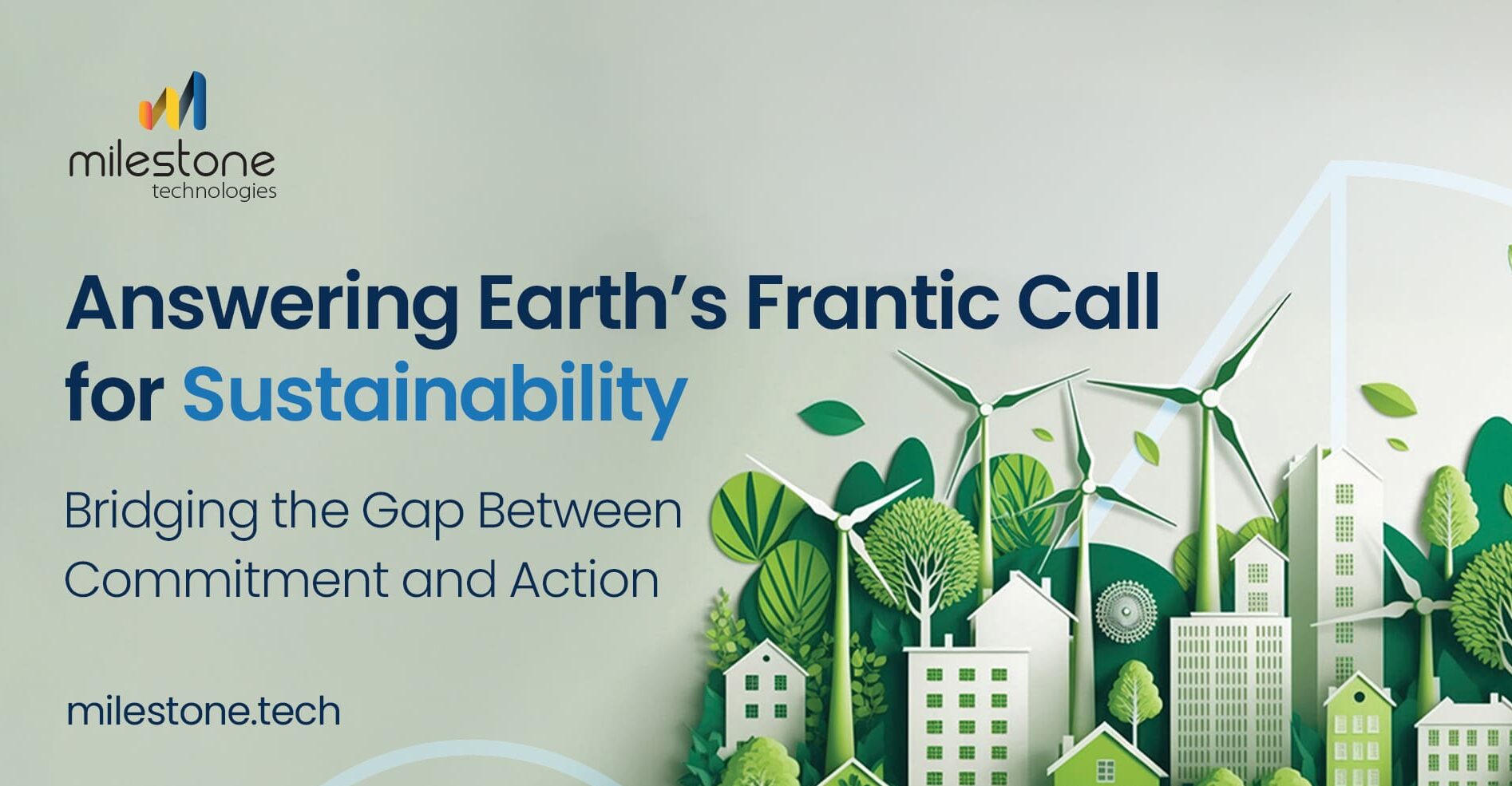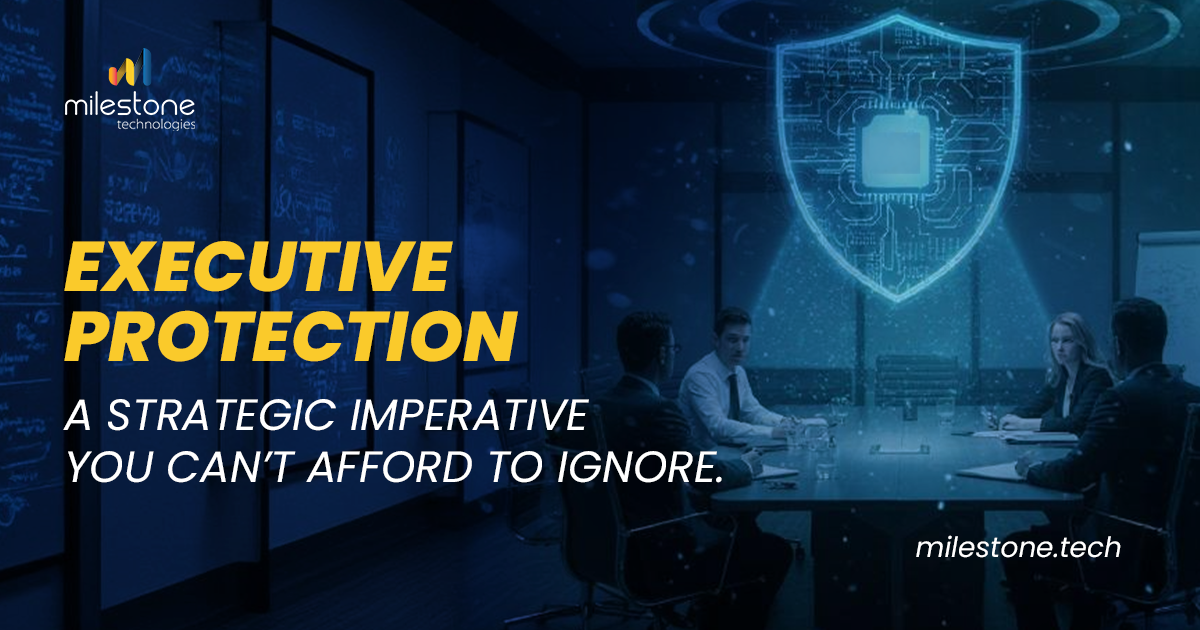Explore actionable strategies to turn sustainability commitments into high-impact outcomes.
The call for sustainability has never been more pressing. Industries worldwide are scrambling to adopt sustainable measures to mitigate the grave consequences of the worsening climate crisis while maintaining the viability of business ecosystems.
Central to this effort is the Race to Zero, a global campaign that demands rigorous and immediate action to halve global emissions by 2030 and achieve net zero by 2050. This is not merely a moral responsibility for businesses, but also a strategic necessity for them – to meet consumer expectations and regulatory compliance, stay efficient and competitive, and build investor confidence.
Notwithstanding this, a formidable gap remains between committed goals and tangible action. Research reveals that a staggering 82% of companies are currently not on track to meet net-zero targets by 2050. Alarming as this is, the possibility of taking immediate and rigorous action lies within reach, with technology serving as the silver lining. There are innovative solutions available today that help reduce carbon footprints, manage resources efficiently, minimize waste, and seamlessly integrate sustainable practices into daily operations – empowering companies to start bridging the gap between commitment and action. Let’s explore these options.
Technology: A Catalyst for Sustainability
Technologies such as AI, automation, big data, and analytics have emerged as promising solutions for sustainability.
- AI and Automation: Future-focused companies acknowledge that these technologies help drive sustainability by optimizing energy use, streamlining operations, and reducing waste and emissions. AI-powered systems dynamically manage energy consumption across facilities, as seen with Google’s AI-driven cooling systems, which cut energy usage in data centers by 30%. Automation plays a key role in the manufacturing industry, enhancing efficiency by reducing material waste and identifying inefficiencies, while predictive maintenance prevents equipment failures, extends machinery lifespans, and conserves resources.Automated waste sorting systems boost recycling accuracy, recovering valuable materials and reducing landfill contributions. AI also facilitates renewable energy integration by predicting energy demand and balancing loads for efficient solar and wind resource use.
- Big Data and Analytics: Big data, analytics, and AI significantly enhance sustainability in the logistics and supply chain industry, known for its carbon footprint from transportation and warehousing. Analytics platforms optimize delivery routes, as seen with UPS’s ORION system, saving over 10 million gallons of fuel annually. Real-time fleet insights support predictive maintenance, extending vehicle life and cutting emissions, while analytics improve energy efficiency in warehouses through smart systems.Demand forecasting minimizes overproduction and waste across the supply chain by analyzing historical data and market trends. Furthermore, sustainability reporting powered by big data tracks environmental metrics like carbon emissions and waste, helping businesses identify improvement areas and transparently communicate progress.
- Sector-Specific Applications: In manufacturing, automation improves precision, reducing material waste. Financial services leverage analytics to enhance operational efficiency and reduce energy use. The technology sector benefits from AI-driven workload distribution, cutting energy usage in cloud computing.
Green IT Solutions
Modern IT infrastructure can be optimized for sustainability through energy-efficient practices and technologies.
- Energy-Efficient Data Centers: Organizations can transition to renewable energy-powered data centers and implement efficient cooling systems. For instance, Amazon has committed to powering its data centers with 100% renewable energy by 2025.
- Server Virtualization: Consolidating physical servers through virtualization reduces energy consumption and enhances utilization rates.
- Eco-Friendly Practices: Simple actions like shutting down idle servers or using energy-efficient hardware can significantly reduce emissions.
- Cloud Computing: Migrating workloads to cloud platforms reduces the need for energy-intensive physical servers, aligning IT operations with sustainability goals.
Circular Economy in IT Asset Management
The circular economy offers a transformative approach to sustainability by emphasizing resource reuse and recycling. Integrating circular principles into IT Asset Management (ITAM) helps businesses extend asset lifecycles and reduce electronic waste.
- Technology-Driven Asset Lifecycle Management: Predictive tools powered by AI help businesses schedule maintenance and refurbishment, ensuring assets remain functional for longer periods.
- Sustainable Disposal Practices: Proper recycling of obsolete equipment enables the recovery of valuable materials like gold and copper, reducing the need for raw material extraction.
- Design for Disassembly: Modular designs in IT products allow components to be reused or replaced, promoting resource conservation.
Decarbonizing Buildings
Buildings are significant contributors to global emissions, and decarbonizing them is crucial for sustainability. Technology provides powerful solutions for achieving this goal:
- Smart Building Systems: IoT-enabled devices monitor and optimize energy use in real time, reducing waste and improving efficiency.
- Green Construction Materials: Using eco-friendly materials reduces emissions during construction and throughout a building’s lifecycle.
- Renewable Energy Integration: Incorporating solar panels or wind energy systems into buildings significantly reduces dependency on fossil fuels.
Innovative Products and Services for Sustainability
Developing new products and services plays a vital role in enhancing energy efficiency and reducing carbon footprints. Businesses are focusing on:
- Energy-Efficient Products: Designing devices and systems that consume less energy without compromising performance.
- Sustainable Packaging: Using biodegradable or recyclable materials to minimize waste.
- Services Promoting Sustainability: Offering cloud-based services reduces the need for physical resources, aligning with eco-conscious operations.
These innovations not only benefit the environment but also position businesses as leaders in sustainability.
Sustainable Sourcing and Supplier Commitments
Improving the environmental performance of suppliers and sourcing sustainable materials are critical for advancing sustainability goals.
- Supplier Audits: Regular evaluations ensure suppliers meet environmental standards and adhere to sustainable practices.
- Sustainable Materials: Using eco-friendly materials, such as recycled plastics or sustainably sourced wood, reduces environmental impact.
- Collaborative Efforts: Partnering with suppliers to develop sustainable solutions strengthens value chains and supports shared sustainability goals.
By prioritizing sustainable sourcing, businesses can amplify their environmental impact and build stronger partnerships.
Milestone’s Role as a Technology Partner
Milestone is committed to bridging the gap between intent and implementation and turning sustainability commitments into actionable outcomes. Leveraging its expertise in green IT, AI-driven process optimization, and IT asset lifecycle management, Milestone helps clients reduce carbon footprints, improve energy efficiency, and integrate sustainable practices into operations with improved efficiency.
As a Green Business Certified organization, Milestone is recognized for its dedication to operating sustainably and continuously improving environmental performance. Our achievements include recognition from EcoVadis for our commitment to sustainability and corporate social responsibility in operations and supply chain management.
Milestone actively advances sustainability through robust initiatives guided by its Environmental Policy, Sustainable Procurement Policy, Sustainable Purchasing Guide, and Waste Management Policy. These policies demonstrate our comprehensive approach to embedding sustainability across all facets of operations.
We are committed to achieving Carbon Neutrality by 2030 as part of the Science Based Targets initiative (SBTi) and have already surpassed this goal through proactive carbon offset credit purchases. We are also on track to obtain ISO 14001 certification by 2025, solidifying our dedication to environmental management and continuous improvement.
Summing Up
The path to sustainability demands innovative technologies, strategic action, and a commitment to shared global goals. From reducing carbon footprints to integrating circular economy practices and leveraging AI for efficiency, businesses have access to tools and technology to take immediate and rigorous action to meet their net-zero targets.
The challenge lies in bridging the gap between aspirations and actionable results. Partnering with technology leaders like Milestone can help industries take impactful steps, ensuring a greener, more hospitable planet for future generations. To know more, call us today.




